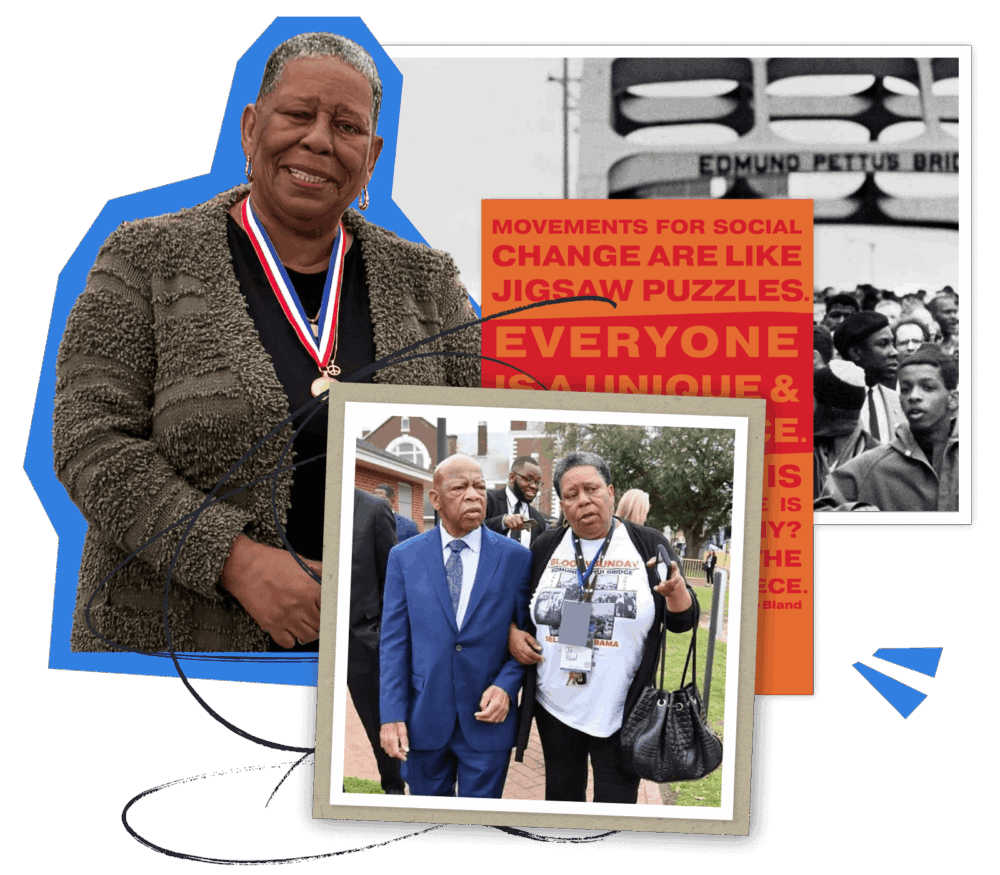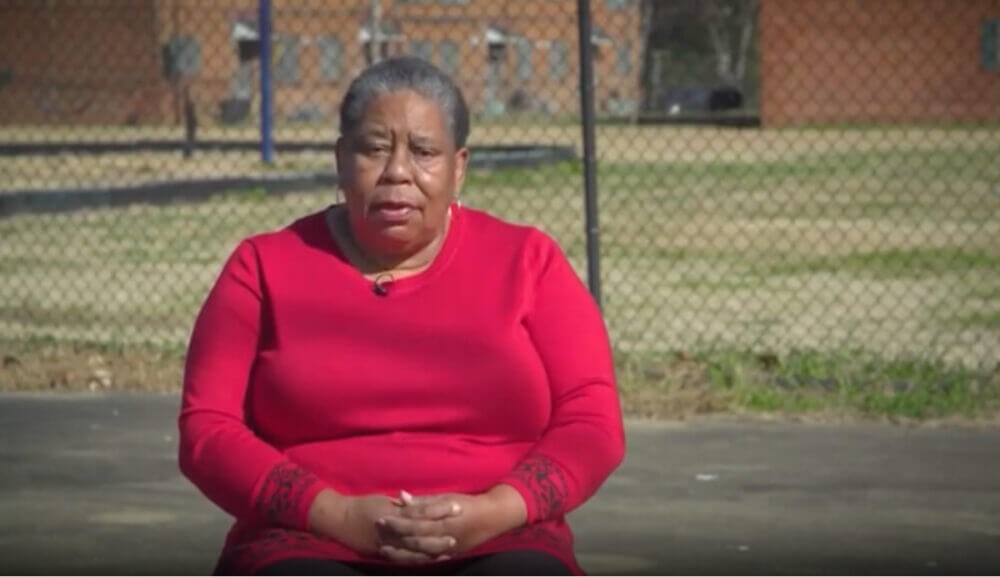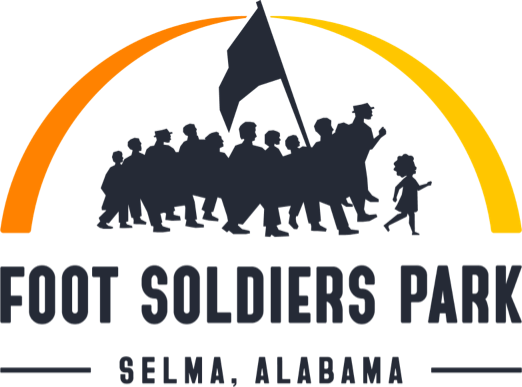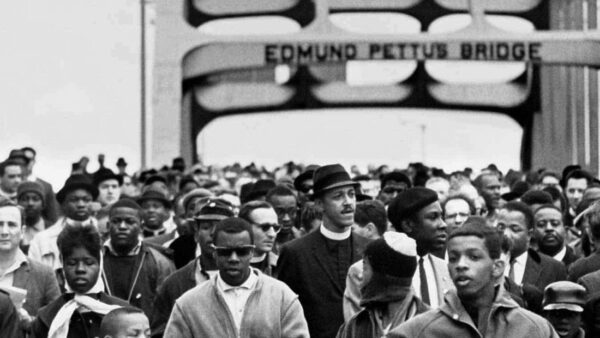Jo Ann Bland
Child foot soldier & lifelong civil rights warrior
Jo Ann Bland is the founder of Foot Soldiers Park along with CEO Kimberly Smitherman. Ms. Bland serves as the organization’s Chief Strategy Officer today overseeing the vision and implementation of the overarching strategy and ensuring financial stability and growth.

Jo Ann Bland’s history
Ms. Bland, a Selma native, began her civil rights activism in the early 1960s as a child. She was a member of the historic organization the Student Non-Violent Coordinating Committee or SNCC, a youth-led organization known for conducting sit-ins of racially segregated restaurants across the South. In 1965, she bravely joined the Selma marches which eventually led to the passage of the Voting Rights Act. She integrated Selma’s A.G. Parish High School along with six other young people. Ms. Bland later went onto college at Staten Island College in New York and served in the U.S. Army. When she returned to Selma in 1989, she co-founded the National Voting Rights Museum and Institute. Soon after, she started her tour agency Journeys for the Soul – now a part of the Foot Soldiers Park family.
In 2021, Ms. Bland and Ms. Smitherman bought the first of many parcels of land located adjacent to the area where civil rights activists gathered on Bloody Sunday in 1965 and will become Foot Soldiers Park – Ms. Bland’s longtime vision for memorializing the everyday people of the Civil Rights Movement.
Marching Ever Forward
Jo Ann Bland, talks about sitting upon the hallowed ground where everyday people took their first steps towards the history-making Selma to Montgomery marches.

Ms. Bland’s story and what she exemplifies (means) she’s a great name and face for so many foot soldiers that will forever be unknown.
Stephen Ham, Vice President of Individual Giving, Wildlife Conservation Society;
Ex-officio Board Member
A message from our founder
My dream for Selma & my vision for Foot Soldiers Park
During my lifetime, I have been both a witness to and a participant in some of our nation’s most consequential civil rights battles.
Born and raised in Selma, Alabama, I’ve seen first-hand how racism and segregation created an arbitrary, yet devastating divide between people who could have otherwise come together as friends, work colleagues and peers. I decided early on that I would always try to lift my voice to confront those divisions and decry injustices wherever I saw them. My experience has taught me that the power of ordinary people cannot be overstated. Each of us just has to find our niche.
In the early 1960’s, I joined my grandmother at meetings held by the local voting rights organization the Dallas County Voters League and led by longtime civil rights activist Amelia Boynton. I joined SNCC, at the age of eight along with other children and teens in my neighborhood. We all wanted to do our part to make the goals of the Civil Rights Movement, equal justice and equal treatment, a reality for ourselves and our families.
By the time I was 11-years-old, I had been arrested at least 13 documented times. I walked across the Edmund Pettus Bridge on Bloody Sunday, marching alongside more than 600 peaceful activists who ended up being brutally beaten, tear-gassed, and hit or trampled by policemen on horses with billy clubs. At one point, I saw a horse near me, and then a woman fell. I can still hear the sound of her head hitting the pavement. I must have fainted after that, because the next thing I knew I was in a car with my head in my sister’s lap, and her blood was dripping from wounds on her head. Later, she needed 26 stitches.
My early involvement in the struggle against “Jim Crow” our American apartheid, has been the foundation and fuel for my civil and human rights work to this day.
In 2017, I started a tour company which teaches visitors from around the world about the history of the civil rights movement in Selma. That’s when I found my niche – to remind people where we’ve been as a nation, and that what happened in Selma is not Black history. It’s American history. We have to talk about the truth of what happened and what was evil and wrong – so that we don’t let the same things happen again.
As I lead groups through Selma now, on the trail of the foot soldiers of 1965, we see clearly the connections between our history and our current reality with ongoing voter suppression and racial inequities. But we can all take action that makes a difference. Visitors gather with me on the same patch of cement where I stood on March 7th, 1965 with civil rights leaders John Lewis, Hosea Williams, and Amelia Boynton. I give each visitor a small stone that has chipped off of this cement as a symbol of their connection to these leaders and their role in carrying on the movement for social change.
It’s my belief that movements for social change are like jigsaw puzzles. Everyone is a unique and special piece. If your piece is missing, the picture is not complete. Why? Because you’re the most important piece.
My dream is that Selma will become a place of pilgrimage for all those who seek to right the wrongs of our society, both in our state, our country, and around the world. My vision for preserving the hallowed ground where the Bloody Sunday march began and creating Foot Soldiers Park is to show every visitor, and especially every child, that they have the power to make great change in their community. The little boy who plays in our playground can see himself in Congressman Lewis’ courageous image, and the little girl who kicks a soccer ball on our fields can see herself in the tenacity of Ms. Boynton. It is my greatest hope that this city and this site are treasured and honored long after all of us, the original foot soldiers, have passed.
With gratitude,
Jo Ann Bland


